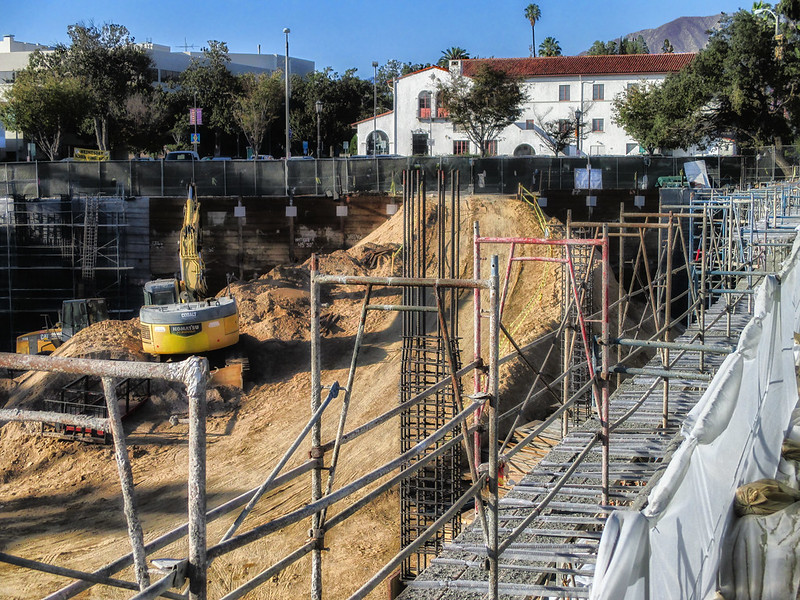To Remedy, or Not to Remedy – That Is the Question

A new paper by UC Davis School of Law student Jordan Wright unravels the myriad complexities of California’s “Builder’s Remedy,” a rarely-used legal practice that may (or may not) greatly accelerate new homebuilding across the state.
The Builder’s Remedy is an obscure provision of the state’s Housing Accountability Act. Its stated purpose is to enable homebuilders to bypass local land use regulations and restrictions when a local government’s Housing Element is out of compliance with state requirements. But the application of the Builder’s Remedy has never been tested in court, and may conflict with other statutes.
Key takeaways:
- As Wright explains, “nobody has ever settled which development standards are eliminated by the builder’s remedy and which are preserved by the savings clause” in the Housing Accountability Act (HAA), and “the looming uncertainties in the coaction of these provisions deter developers who may otherwise pursue builder’s remedy project approvals.”
- It turns out that this was never originally intended to be in question. The HAA was quite clear that the Builder’s Remedy superseded local development standards “after a 2004 amendment inadvertently removed crucial language which linked a city’s ability to apply development conditions to its having adopted a housing element.”
- Courts can and should consider the clearly documented legislative intent to clear up this uncertainty and “construe the HAA broadly in the interest of housing.”
The Builder’s Remedy recently came into the spotlight after the affluent City of Santa Monica failed to certify a compliant Housing Element by their deadline, and 16 apartment buildings were quickly proposed that completely disregarded the municipality’s exclusionary zoning laws.
The proponents argued that the lack of a compliant Housing Element allows them to propose such projects during the period of noncompliance, and state law–namely California Government Code § 65589.5 (d)–may very well be on their side. So long as the project meets “objective” health and safety standards, local density restrictions are not applicable.
But as Wright explains, the same law gives ambiguous leeway to local development standards that may conflict with the Builder’s Remedy.
The Housing Accountability Act also contains a “savings clause” which, as Wright explains, creates a “conflict between the requirement that development standards be objective and the requirement that they apply in a particular way.” Subdivision (f) of the same code section, “permits a city to apply local development standards which are (1) objective, (2) quantifiable, (3) written, (4) ‘applied to facilitate and accommodate development at the density permitted on the site and proposed by the development,’ and (5) ‘consistent with meeting the jurisdiction’s share of the regional housing need.’” The difficulty comes from how these standards are “applied:” does a city with a noncompliant Housing Element actually have the discretion to apply development standards to enforce its density limits, at the same time that the Builder’s Remedy is supposed to exempt projects from those same density limits?
Wright examines the legislative record from Senate Bill 2011 (1990), the bill that codified the Builder’s Remedy, confirming what optimists likely hoped for: it was never meant to be this way. Originally, there was no savings clause for local development standards, but one was added “after many cities expressed their concerns that builder’s remedy-approved projects would be incompatible with adjacent land uses.”
In an unsuccessful attempt to mollify opponents of the bill, legislators added language that “saved” objective local development standards, but critically, only for cities that had adopted a housing element. In other words, cities would have to adopt a housing element before applying objective development standards to Builder’s Remedy projects. When the bill passed, it was hailed as “transformative” for housing justice, but this outcome was largely muted.
The savings clause changed significantly in 2004 with the passage of AB 2368, and Wright argues that this was largely inadvertent. While many provisions explicitly strengthened the Builder’s Remedy, one change to the savings clause had the unintended consequence of removing the requirement for an adopted housing element to be in place before applying development standards, by changing the requirement from “quantified objectives” to specifically “regional housing need.”
As Wright explains, “the new language permitted only standards that aligned with the city’s strategy to meet its entire regional housing need…While the builder’s remedy still precluded a city without a housing element from applying its local standards to a proposed project, this limitation arguably no longer existed in the savings clause.”
But there is hope on the horizon. Wright suggests that courts can resolve the inevitable conflicts that arise from this statutory tension by interpreting the HAA in light of its clear intent to support more housing construction. One possible strategy is “for a court to deem any standard that a city imposes on a builder’s remedy-approved project as presumptively invalid.”
In other words, if a city does not have a compliant housing element, how could it possibly argue that it is trying to meet its fair share of regional housing needs? Wright argues that the onus should be on the city to prove that its development standards are consistent with meeting regional housing needs.
Another more Solomonic approach would be for a court to rule that local development standards are “waived if they cannot be applied without undermining the proposed density of a builder’s remedy-approved project.”
While this conflict is an obvious opportunity for the state legislature to clarify the original intent of the law, Wright contends that the legislative record already provides a compelling case for courts to uphold legal remedies for housing abundance.